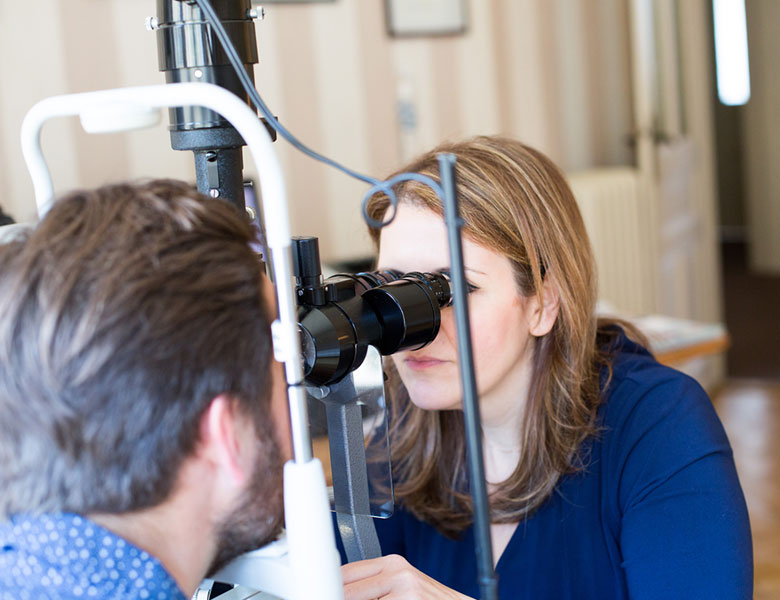DEFINITION
Les maladies oculaires liées au diabète n'ont aucun signe avant-coureur. Trouver et traiter la maladie tôt, avant qu'elle entraine une baisse de vision ou la cécité, est le meilleur moyen de contrôler ces problèmes oculaires. Si vous avez du diabète, vous devez faire un contrôle de vos yeux dilatés au moins une fois par année.
QU'EST-CE QUE LA RETINOPATHIE DIABETIQUE?
La rétinopathie diabétique est une complication du diabète et une cause majeure de cécité. Elle survient lorsque le diabète endommage les minuscules vaisseaux sanguins à l'intérieur de la rétine, le tissu sensible à la lumière au fond de l'œil. Une rétine en bonne santé est nécessaire pour une bonne vision.
Si vous avez une rétinopathie diabétique, vous remarquerez peut-être aucun changement de vision au début. Mais au fil du temps, la rétinopathie diabétique peut s'aggraver et entrainer une perte de vision. La rétinopathie diabétique affecte généralement les deux yeux.

MYTHES ET REALITES AU SUJET DU DIABETE
01. Les maladies oculaires liées au diabète sont la rétinopathie diabétique, la cataracte et le glaucome. La rétinopathie diabétique est l'une des principales causes de cécité chez les adultes. Plus longtemps une personne souffre de diabète, plus elle risque de développer une maladie oculaire.
02. Il n'y a souvent aucun signe avant-coureur dans les premiers stades des maladies oculaires liées au diabète. La vision ne baisse pas jusqu’à ce que la maladie devienne grave.
03. Toute personne diabétique doit subir un examen oculaire dilaté au moins une fois par année. Comme les maladies oculaires liées au diabète n'ont généralement aucun symptôme, un examen oculaire régulier est important pour un dépistage précoce et un traitement au bon moment.
04. Chez certaines personnes, les vaisseaux sanguins de la rétine peuvent gonfler et laisser échapper du liquide. Chez d'autres, des nouveaux vaisseaux anormaux se développent à la surface de la rétine.
05. Le risque de glaucome est presque deux fois plus important chez les personnes diabétiques. Le glaucome peut généralement être traité avec des médicaments, une chirurgie au laser ou une chirurgie traditionnelle.
06. Avec la chirurgie laser, un faisceau de lumière spéciale est utilisé pour rétrécir les vaisseaux sanguins anormaux ou rendre étanche les vaisseaux sanguins qui fuient. Il a été prouvé que la chirurgie au laser réduit de 5 ans le risque de perte de vision en cas de rétinopathie diabétique avancée dans plus de 90 pourcent des cas.
07. Un examen des yeux à travers les pupilles dilatées est le meilleur moyen de détecter les maladies oculaires liées au diabète. Dans un examen oculaire dilaté, des gouttes sont utilisées pour élargir les pupilles. La dilatation permet à l'ophtalmologue de mieux voir à l'intérieur de l'œil afin de détecter des signes de maladie.
08. Les personnes diabétiques ont deux fois plus de risque de développer une cataracte et la développe plus jeunes que les non-diabétiques. La chirurgie de cataracte est sure et efficace, avec un taux d'amélioration de 90%.
09. Même avec un bon contrôle de la glycémie, il existe toujours un risque de développer une maladie oculaire liée au diabète. Cependant, les études montrent qu'une bonne surveillance du taux de sucre dans le sang ralentit l'apparition et la progression de la rétinopathie diabétique.
10. Avec une détection précoce et un traitement rapide, le risque de cécité due à la maladie oculaire liée au diabète peut être réduit.

